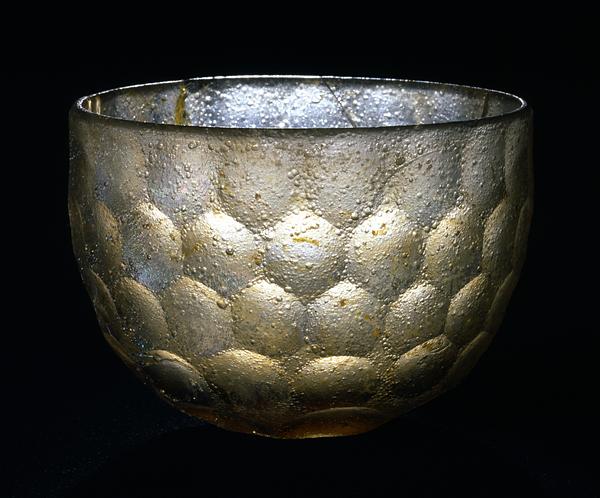Bowl, thick, colorless glass, facet-cut
Iran or Iraq; 6th-7th century
H: 8.3; Diam: 11.5 cm
The form and facet-cut decoration of this bowl are characteristic of Sasanian glass. It is covered entirely by a pattern of hexagonal, slightly concave facets that were cut on a grinding wheel. The form of the facets varies slightly so that the pattern can continue uninterrupted from top to bottom. This type of “honeycomb” decoration was adopted by the early Islamic glassmakers, who used it on glass objects in other shapes.
Renowned Sasanian glass was exported all the way to the Far East. A closely related bowl in Tokyo can be dated to before 535, the year of the death of the Emperor Ankan, in whose tomb it was found.
Inv. no. 6/1969
Published in:
C .L. Davids Samling. Fjerde Del : Jubilæumsskrift 1945-70, København 1970, cat.no. 6, p. 126;
André Leth: Davids Samling. Islamisk kunst = The David Collection. Islamic Art, København 1975, p. 8;
Kjeld von Folsach: Art from the World of Islam in The David Collection, Copenhagen 2001, cat.no. 299;
Sheila S. Blair and Jonathan M. Bloom (eds.): Cosmophilia. Islamic Art from the David Collection, Copenhagen, McMullen Museum of Art, Boston College, Boston 2006, cat.no. 42;
